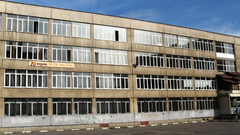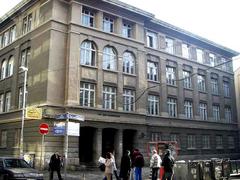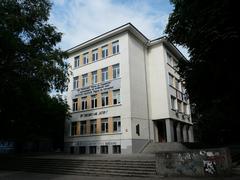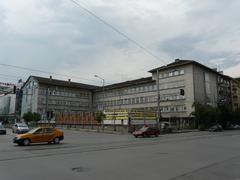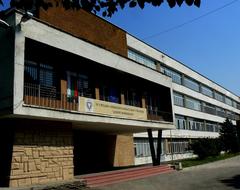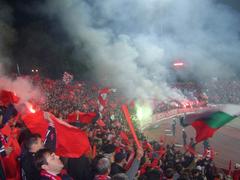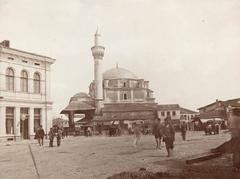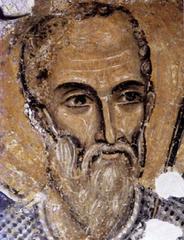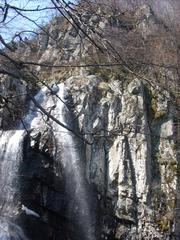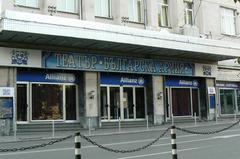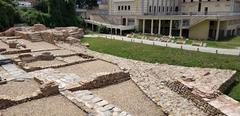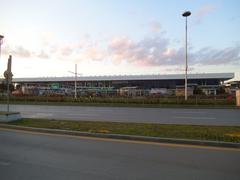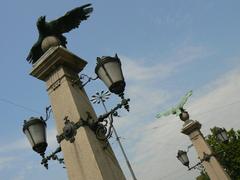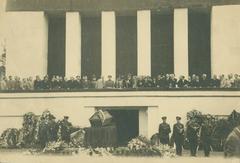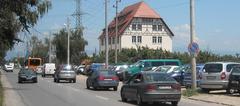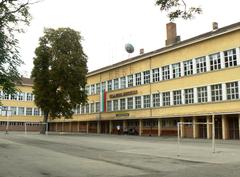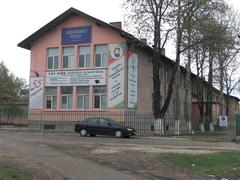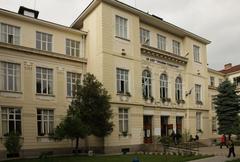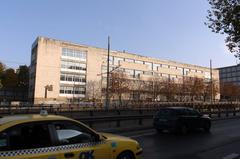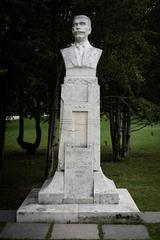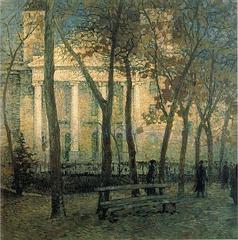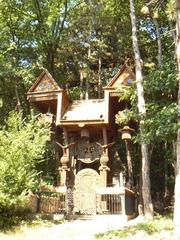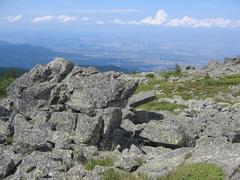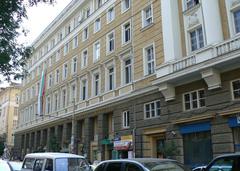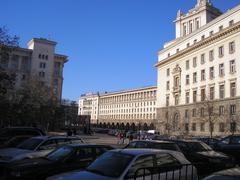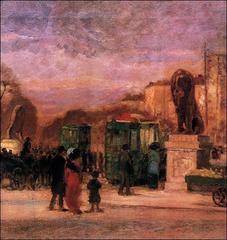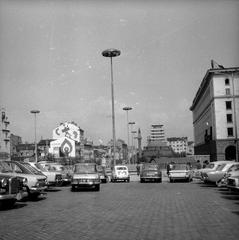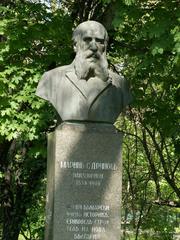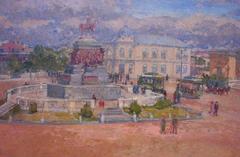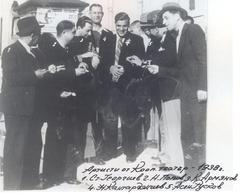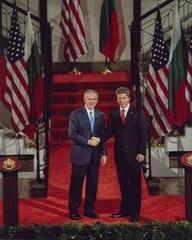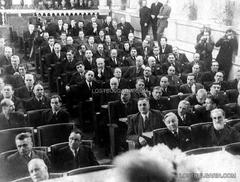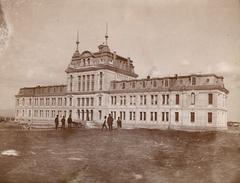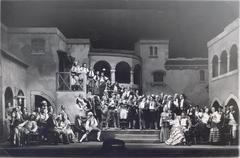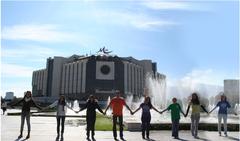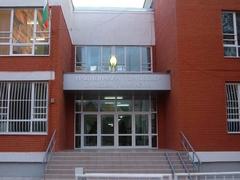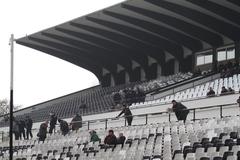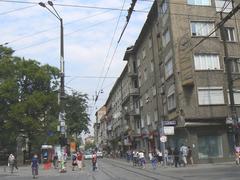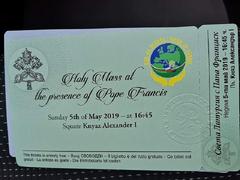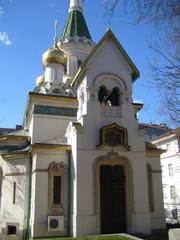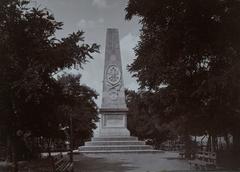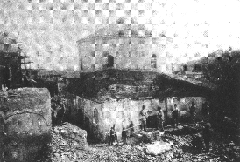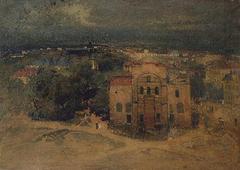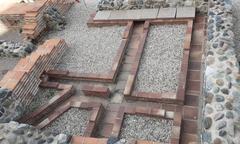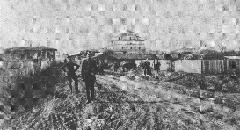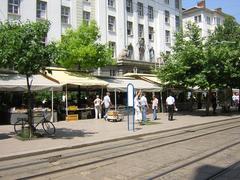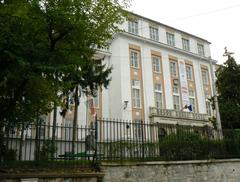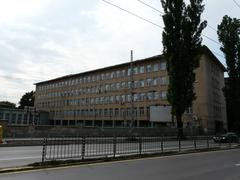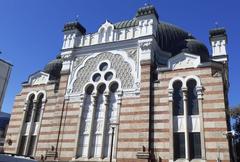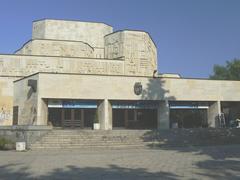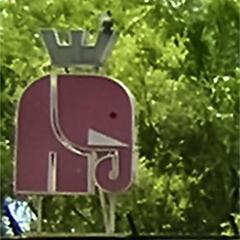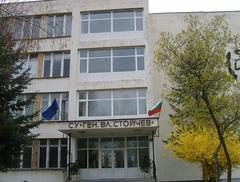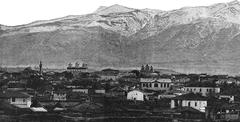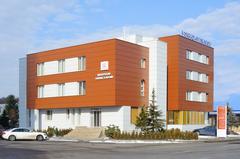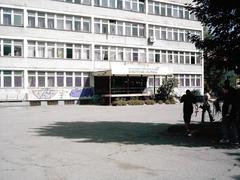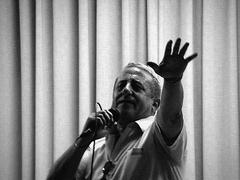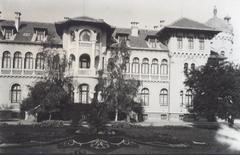
Saint Petka of the Saddlemakers Church, Sofia: Visiting Hours, Tickets, and Historical Significance
Date: 04/07/2025
Introduction
Saint Petka of the Saddlemakers Church, known locally as Sveta Petka Samardzhiyska, stands as a testament to Sofia’s enduring spiritual and historical legacy. This modest, semi-subterranean medieval Bulgarian Orthodox church is not only a remarkable religious monument but also a living chronicle of the city’s Byzantine roots, its artistic traditions, and the resilience of its Christian community through centuries of change (GuideBG, About Sofia, sofia-guide.com). This guide provides a comprehensive overview of the church’s origins, architectural features, religious and cultural significance, practical visiting information, and its role in Sofia’s vibrant landscape.
Origins and Early History
Saint Petka of the Saddlemakers Church was built in the 11th century atop the foundations of a former Roman cult site, reflecting Sofia’s transformation from ancient Serdica to a city of Christian devotion (GuideBG). The church is dedicated to Saint Paraskeva of Iconium (Saint Petka), a revered Christian martyr whose cult became especially prominent in the Balkans after her relics were moved to Tarnovo in 1238. The term “Samardzhiyska” refers to the saddlemakers’ guild (samardzhii), which historically maintained the church—a unique intersection of faith, trade, and social identity (About Sofia). An inscription at the southern entrance, dating to 1241, confirms its longstanding presence.
Architectural Features
Exterior and Structure
The church is a compact, single-nave structure, approximately 12 by 6 meters, built from thick stone and brick walls—one meter thick in places—to ensure durability and insulation (sofia-guide.com, wikipedia.org). Its partially sunken position is a direct response to Ottoman-era restrictions that limited the height of Christian buildings. This design helped protect the church from destruction or conversion during foreign rule and from the effects of urban development.
Layout and Plan
Inside, the church features a rectangular nave topped with a barrel vault and ending in a hemispherical apse, housing the altar. This spatial layout is characteristic of medieval Bulgarian Orthodox architecture, adapted to the constraints of the era (bulgaria-infoguide.com). The compact floor plan maximizes limited space while retaining essential liturgical elements.
Crypt and Archaeological Layers
Excavations have revealed a crypt beneath the church, likely a remnant of the earlier Roman religious site, further emphasizing the continuity of sacred use at this location (wikipedia.org, visitsofia.bg). This archaeological layer deepens the church’s historical significance and allure.
Interior Murals and Artistic Heritage
The church’s understated exterior belies its rich interior, adorned with mural paintings from the 14th through 19th centuries. These frescoes, some attributed to the celebrated iconographer Saint Pimen Zografski, depict biblical scenes and saints with vivid color and detail, despite centuries of wear and suppression (tweekends.com, building.am). The layering of murals attests to the church’s continuous use and evolving artistic traditions.
Lighting and Atmosphere
Limited windows and the church’s partially subterranean design result in a dim, contemplative interior. Candles and oil lamps cast a warm glow, enhancing the mystical atmosphere and highlighting the frescoes (tweekends.com, sofia-guide.com).
Religious and Cultural Significance
Saint Petka is one of Bulgaria’s most venerated saints, celebrated as a protector and healer. The church has long served as a focal point for Orthodox Christian worship and pilgrimage, especially on St. Petka’s Day (October 14), which draws large numbers of worshippers (About Sofia). The saddlemakers’ guild’s patronage is a rare example of craft and faith intertwining, imbuing the church with deep communal meaning (GuideBG). The church is also associated with the legend that the remains of Bulgarian national hero Vasil Levski may be buried here—a story that, though unconfirmed, adds national reverence to its spiritual aura (About Sofia).
Survival Through Ottoman Rule
Despite centuries of Ottoman domination, Saint Petka of the Saddlemakers Church survived, thanks to its inconspicuous design and the steadfast stewardship of the local Christian community and the saddlemakers’ guild (GuideBG). This resilience makes the church a symbol of faith and perseverance.
Modern Era: Suppression and Revival
During Bulgaria’s communist period (1944–1989), the church was closed and buried beneath urban development for over four decades, endangering its preservation. With the return of religious freedoms in 1992, the Bulgarian Orthodox Church successfully restored the site to active worship, sparking a revival of its religious and cultural significance (GuideBG).
Visiting Saint Petka of the Saddlemakers Church
Location
The church is centrally located near the Serdika metro station and key Sofia landmarks, including St. Nedelya Church, the Ancient Serdica archaeological complex, and the Central Market Hall (visitsofia.bg). Its prominent position makes it easily accessible for both tourists and locals.
Visiting Hours
- Typical hours: 9:00 AM to 6:00 PM daily (some sources report 8:00 AM opening). Hours may vary on religious holidays—check Visit Sofia for updates.
Tickets and Entrance Fee
- Admission: Free of charge, though a small fee (2–5 BGN) may apply during some periods to support maintenance (visitsofia.bg). Donations are always welcomed.
Accessibility
- The church’s historic, partially subterranean structure means accessibility is limited for those with mobility impairments. There are steps down to the entrance, and the interior is compact.
Guided Tours
- Guided tours are available through various Sofia tour operators. These tours provide added insights into the church’s history, art, and role within Sofia’s religious landscape. Booking in advance is recommended, especially during peak tourist seasons.
Visitor Etiquette
- Modest dress is required (shoulders and knees covered; hats removed).
- Maintain respectful silence, especially during services.
- Photography may be restricted inside; always check posted rules or ask attendants.
Annual Celebrations and Community Engagement
The church’s feast day, St. Petka’s Day (October 14), is marked by special liturgies, processions, and community festivities, strengthening its role as a living spiritual center.
Nearby Attractions
Take advantage of the church’s central location by exploring other major Sofia sites, including the Alexander Nevsky Cathedral, Banya Bashi Mosque, Sofia Synagogue, and the Roman ruins of ancient Serdica.
Frequently Asked Questions (FAQ)
Q: What are the visiting hours for Saint Petka of the Saddlemakers Church?
A: Usually open from 9:00 AM to 6:00 PM daily, but hours may vary during holidays or events.
Q: Is there an entrance fee?
A: Admission is generally free, but a small fee may apply at times; donations are appreciated.
Q: Are guided tours available?
A: Yes, through local tour operators or as part of broader Sofia historical tours.
Q: Is the church accessible for visitors with disabilities?
A: Accessibility is limited due to stairs and the semi-subterranean design.
Q: Can I take photographs inside?
A: Check onsite regulations; photography may be restricted to protect the frescoes.
Conclusion
Saint Petka of the Saddlemakers Church is more than a historic landmark—it is a living symbol of Sofia’s layered past, religious tradition, and community spirit. Its unique architecture, remarkable frescoes, and role as a sanctuary for faith through turbulent times make it an essential stop for anyone exploring Sofia’s cultural heritage. Plan your visit to experience this spiritual treasure firsthand, and consider joining a guided tour to gain deeper insight into its art and history.
For the latest information, guided tours, and audio guides, check Bulgarian Orthodox Church and Visit Sofia.
References and Further Reading
- Saint Petka of the Saddlemakers Church in Sofia: Visiting Hours, Tickets, History, and Cultural Significance – GuideBG
- Saint Petka Of The Saddlemakers Church in Sofia: History, Visiting Hours, and Cultural Significance – About Sofia
- Visiting the Church of St Petka of the Saddlers in Sofia: Hours, Tickets, and History – Sofia Guide
- Saint Petka of the Saddlemakers Church Sofia: Visiting Hours, Tickets, and Complete Visitor Guide – Bulgarian Orthodox Church & Visit Sofia, Visit Sofia
- Wikipedia: Church of St Petka of the Saddlers
- Tweekends: Church of St Petka the Saddlers
- Building.am: Church of St Petka of the Saddlers, Sofia, Bulgaria
- BNR: Saint Petka Stara Church – Venerable Guardian of Christianity
- Visit Bulgaria: St. Petka Samardzhiyska Church, Sofia City










